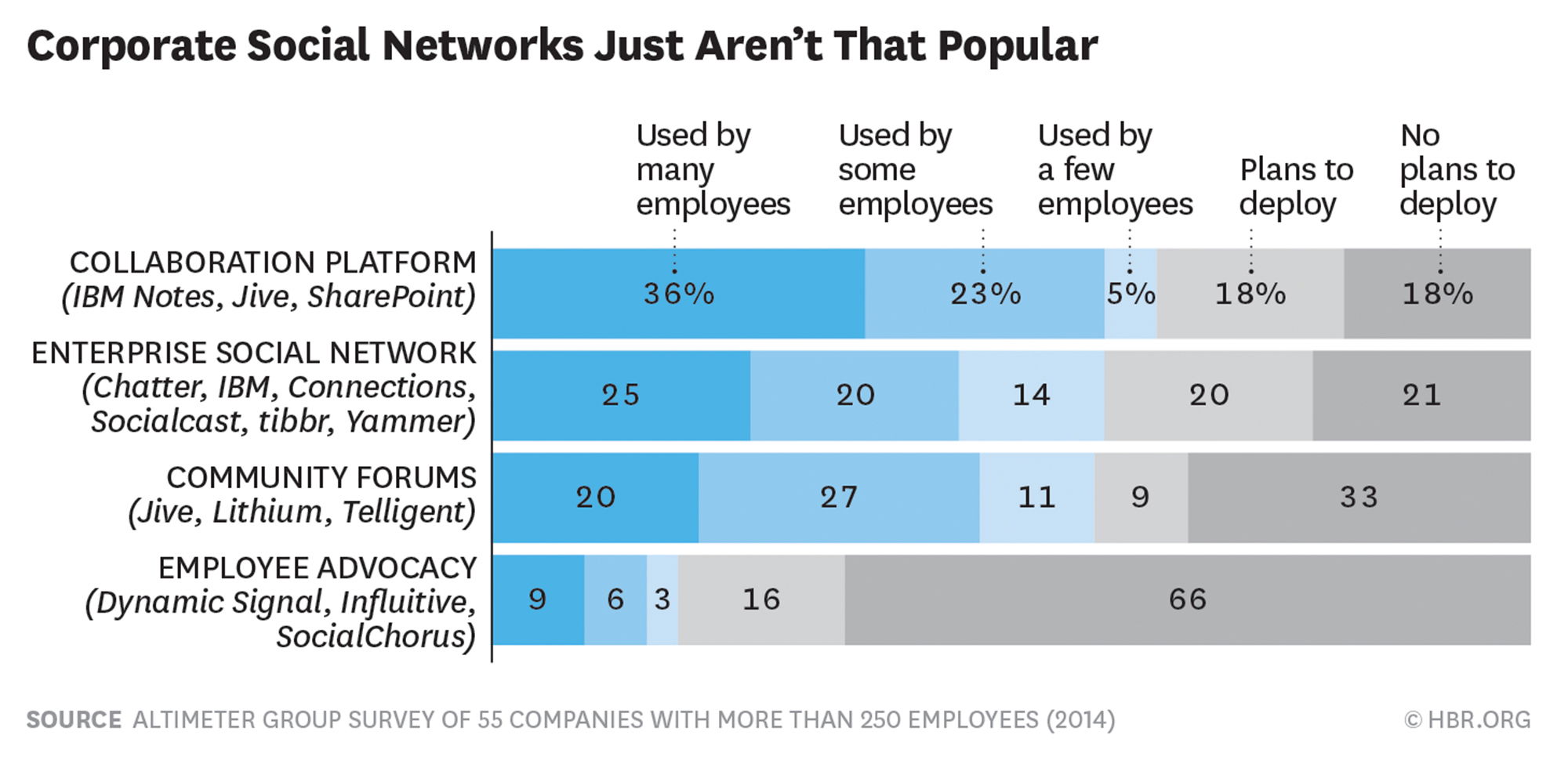New Enterprise Social Networks: Can they work for law firms?
BY Kerrie Spencer

LISTEN
An internal communication system is another term for an enterprise social network. These networks provide a way for partners, associates, paralegals and other staff to interact from inside a firm’s firewall. They are similar to chat suites or chat rooms, but in many ways different. Enterprise social networks are intended to foster staff cohesiveness, sharing, productivity and sensemaking within the firm’s local network.
Enterprise network providers promise less hassle and more collaboration by providing an environment in which team members can connect instantaneously. Most enterprise platforms share several features, like private chat, the ability to create groups and teams and to communicate within those groups, calendering, notes, document uploads and task management. A law firm, for example, might create a group related to a particular case or client, or one specific to a practice group. Within these groups, people who need to collaborate on relevant issues could talk securely and privately, without interrupting the workflow of others at the firm.
As a business tool, enterprise social networks have been catching on quickly over the past several years, to mixed reviews. Businesses that have given an internal communication system a try voice numerous opinions about their effectiveness — both good and bad. Are these networks useful for law firms, or are they heading to extinction before they even get started?
One concern early adopters have voiced is whether such a system may actually foster isolation and detrimentally affect face-to-face interactions. Certainly this is a major issue in today’s fast-paced digital world where sending a text or an email is quicker than finding and talking to a person in the same office. Is office camaraderie affected by internal communication systems? If so, how does a loss of human connection between staff affect productivity?
Another concern is the ability of instant messaging to interrupt much needed focus. How does being in constant communication with colleagues affect an attorney’s ability to get client work done? Do these systems work for all employees — everyone from senior partners and managers to mailroom staff — or only a few?
Enterprise social networks can work well in some business settings. Law firms have been slow to adopt these technologies, which is understandable given their ability to disrupt an already established workflow. These systems may not be ideal for every law firm where personal communication can be formal by necessity and collaboration is mainly done in person.
Restricted access systems
Restricted access systems exist within a law firm’s firewall and are solely for the use of staff. The goal of these systems is to foster more open communication on all levels. Some of the more popular networks include Jive, Yammer and Socialcast, and the team communication platform Slack. As they have grown in popularity, a wide array of options have become available. Additional examples include Asana, Jostle Me, Tibbr, Convo, Kaltura, Chatter, Zyncro, Socialtext and Connections.

According to research by technology research and strategy company Altimeter, only 25 percent of enterprise social networks installed have many employees using them regularly.
Despite the vast array of choices for firms interested in this kind of an internal communication system, it appears that less than half of such tools have many workers using them on a regular basis.
Why do internal communication systems fail?
It appears that many enterprise social systems fail because top executives and management do not view the engagement and collaboration offered by these internal communication systems to be a good use of their time. Furthermore, the perception appears to be that socially engaging on a chat-like internal communication system narrows the power distance between top management and their employees, diminishing their ability to command and control and be respected as capable managers. Top management rarely aspire to be "social friends" with employees.
In the C-suite world of law firms and other businesses, if something is not used, approved or supported — meaning the owners engage with it regularly and promote its use — chances are that staff will not use such systems either. Many managers and top executives view internal chat system to be detrimental to getting work done. Unfortunately, such an attitude misses the reality that such systems have the capacity to be bellwethers when it comes to identifying client, customer or staff problems.
However, the point now is that enterprise social systems have not yet reached their potential. They may be used incorrectly as more of a social tool than a problem solving tool, creating a place where staff play rather than work on projects. Until they do prove their worth on a wider scale, law firms and other companies may not consider using them. For an enterprise social system to work, a firm’s leadership needs to be engaged in digital communication with all firm members and employees and have an open attitude about this communication.
Enterprise social systems as problem solvers
Consider the case of franchise giant Red Robin, with over 450 restaurants across the nation. To stay in touch, the senior vice president introduced Yammer. On the introduction of a menu item referred to as the "Pig Out Burger," employees used Yammer to alert head office that customers did not like the burger. Ultimately, managers discussed ways to adjust their latest offering on Yammer, and the product was revamped within a month.
Such an occurrence could have taken over a year to accomplish, and with much loss of revenue. This is an example of effective management and staff collaboration to solve a problem. Perhaps an enterprise social network in a large law firm may find uses for such a system that mimic Red Robin’s. For example, if a large national law firm starts receiving communications from an office experiencing a significant increase in product liability cases relating to a certain drug, that office can notify other locations of the potential for cases to present themselves in other jurisdictions. This kind of communication, followed by action, allows more productive engagement and collaboration as well as a chance for employees to be heard by higher management.
Also consider the enterprise social network case study that involved UPS’s implementation of Twitter in California. The company president chose Twitter because employees were already familiar with it. However, it was re-purposed into an internal communication system that sent out pertinent information to workers such as accident sites and route changes. UPS also uses Twitter as a company-wide employee recognition platform.
If management and owners can explore ways to use these systems productively within their firm’s culture, their full potential may be explored. Traditional managers need to investigate how to move into the digital age of staying in touch at the speed of light in order to handle any problems that arise efficiently and effectively. Any enterprise social system tool can assist this process, but it is the thought leaders and invested partners who need to use the tools with purpose and intent in order to make the tool an effective one.
Enterprise social system issues
As with many other digital solutions that aim to improve communications between people and groups, there are glitches, gaffes, fails and bugs. The first generation of enterprise social platforms are stumbling toward a second generation (Enterprise 2.0), which may still carry some of the glitches of the first.
What is known about the failure rate of first generation enterprise social networks is that many are built with preconceived notions that do not fit a business milieu. For instance, the companies making these products assume everyone using one will jump on and collaborate, but the platforms are designed mainly to promote engagement between employees, not necessarily to be problem-solving workhorses. The enterprise social system also does not necessarily adapt well in the presence of a structured team order or established, existing law firm culture. It tends to be disruptive to existing work processes, can flood workers with information overload, and harbors the potential to have leadership decisions challenged digitally.
Ultimately, if your law firm has good communication offline, then an enterprise social network may work for you. As enterprise social networks become smarter, introducing a restricted access communication system to a firm may become more attractive. In the meantime, research and experimentation always lays the foundation for the incoming enhancements of the digital world.
LATEST STORIES



